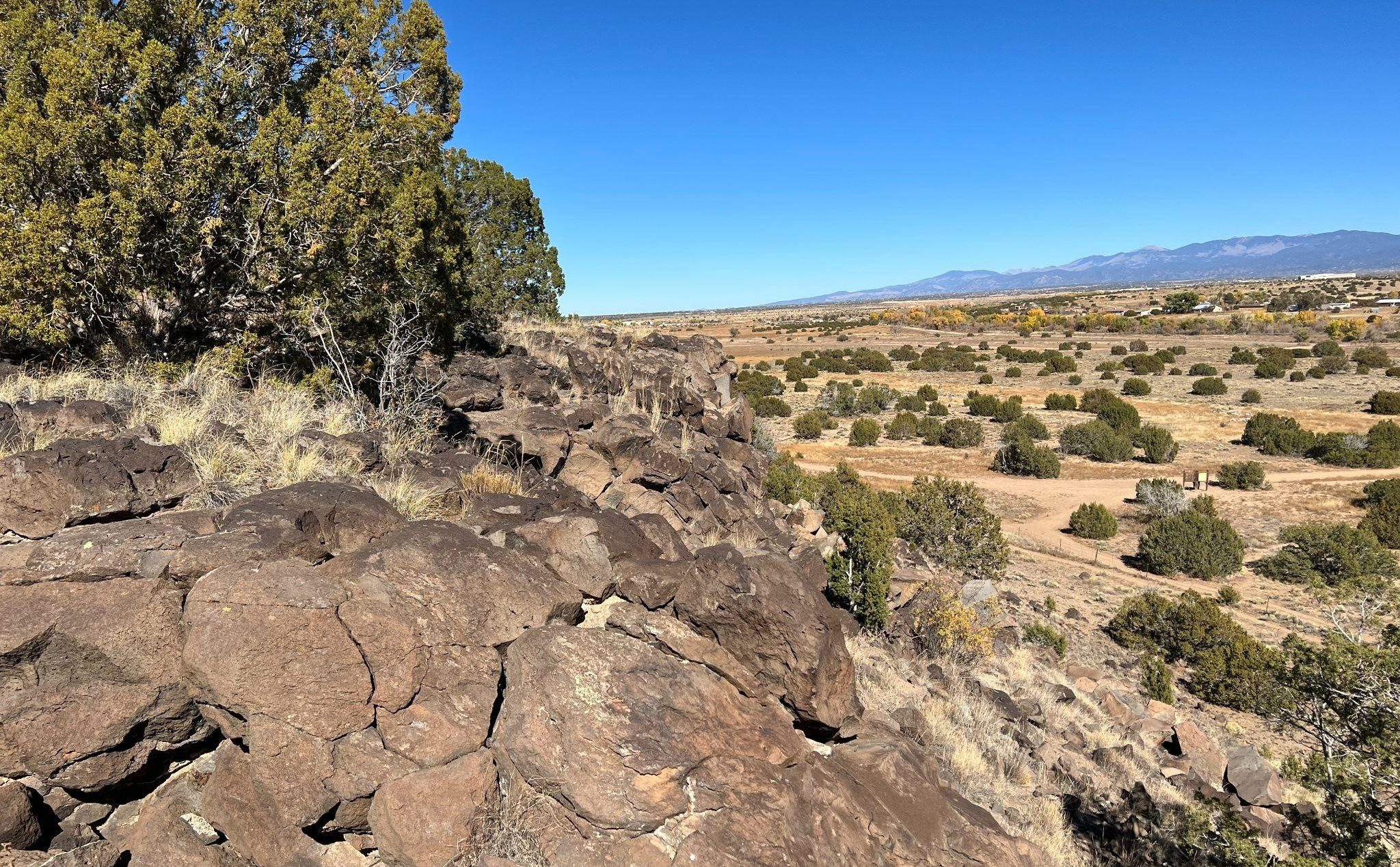We have much more to do and your continued support is needed now more than ever.
The Caja del Rio Must Be Protected
This Spectacular Landscape Embodies the Sacred Relationships Between People and Wildlife

Just outside the City of Santa Fe, New Mexico lies a spectacular landscape that embodies the sacred relationships between people, land, water, and wildlife since time immemorial.
The Caja del Rio spans more than 100,000 acres and contains thousands of ancient petroglyphs from the 13th-17th century. These Pueblo rock etchings show the deep connection that people have had to these lands, the water, and wildlife for generations. I often bring my 2-year-old daughter to these sites to teach her about the history of these lands and remind myself why it’s so important that I do the public lands work that I do.
The Caja also is the site of a major portion of the historic Spanish trail of El Camino Real Tiera de Adentro. The trail was the longest trade route in North America that ran from Mexico City to Ohkay Owingeh Pueblo. That route later formed part of the famous Route 66, which fostered hope for the nation coming out of the Great Depression and became a symbol of adventure, freedom and westward expansion.
Beyond its historical and cultural significance, the Caja is home to diverse wildlife including elk, mule deer, mountain lions, bears, lizards, and snakes. It is home to a variety of birds, including golden and bald eagles, and burrowing owls. The Caja is a critical piece of a wildlife migration corridor running from Colorado to Mexico—one of the most intact wildlife pathways in the nation.
Despite the tremendous cultural, historical, and wildlife significance, the Caja faces numerous threats—including wildfires, mining, poaching, vandalism, illegal dumping, and habitat fragmentation. That has brought a broad group—ranging from Pueblo governors, spiritual leaders, outdoor recreationists, and community advocates—together to advocate for the Caja to be permanently protected.
This year, the All Pueblo Council of Governors, the Santa Fe County Commission, and the Santa Fe City Council passed resolutions calling for federal protections so that the Caja will continue to thrive for generations to come.
The Caja is currently managed by the U.S. Forest Service and the Bureau of Land Management. However, without permanent protections and increased funding for better management and law enforcement, the Caja’s future is at risk. Currently proposed legislation could allow mining to desecrate these sacred lands and create new roads and infrastructure that will fragment this fragile wildlife habitat. Almost on a daily basis, ancient petroglyphs are defaced, trash is dumped, and illegal shooting threatens wildlife and creates an unsafe environment for those that enjoy the Caja.
We need permanent federal protections to safeguard this landscape so that future generations can continue to explore, learn and connect with these sacred lands. Congress and President Biden need to listen to the diverse communities of northern New Mexico advocating for permanent safeguards for the wildlife, sacred and archaeological sites, lands, and waters of the Caja.
If this natural and cultural treasure isn’t protected, a large part of our history and our very identity will be lost with it. It’s time to implement stronger legislative and administrative protections—whether it’s designated as a National Conservation Area, Traditional Cultural Property, or National Monument. These safeguards are essential so that the Caja receives the funding and critical attention it so desperately needs and deserves.





















